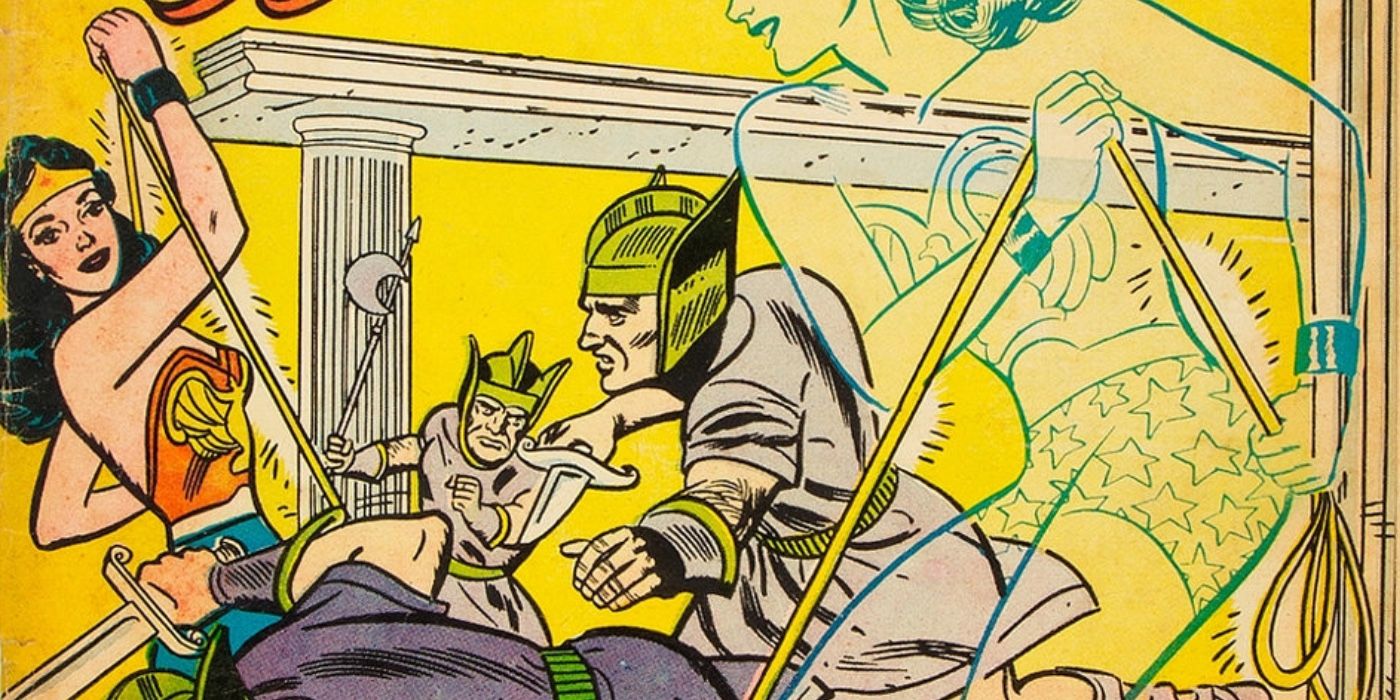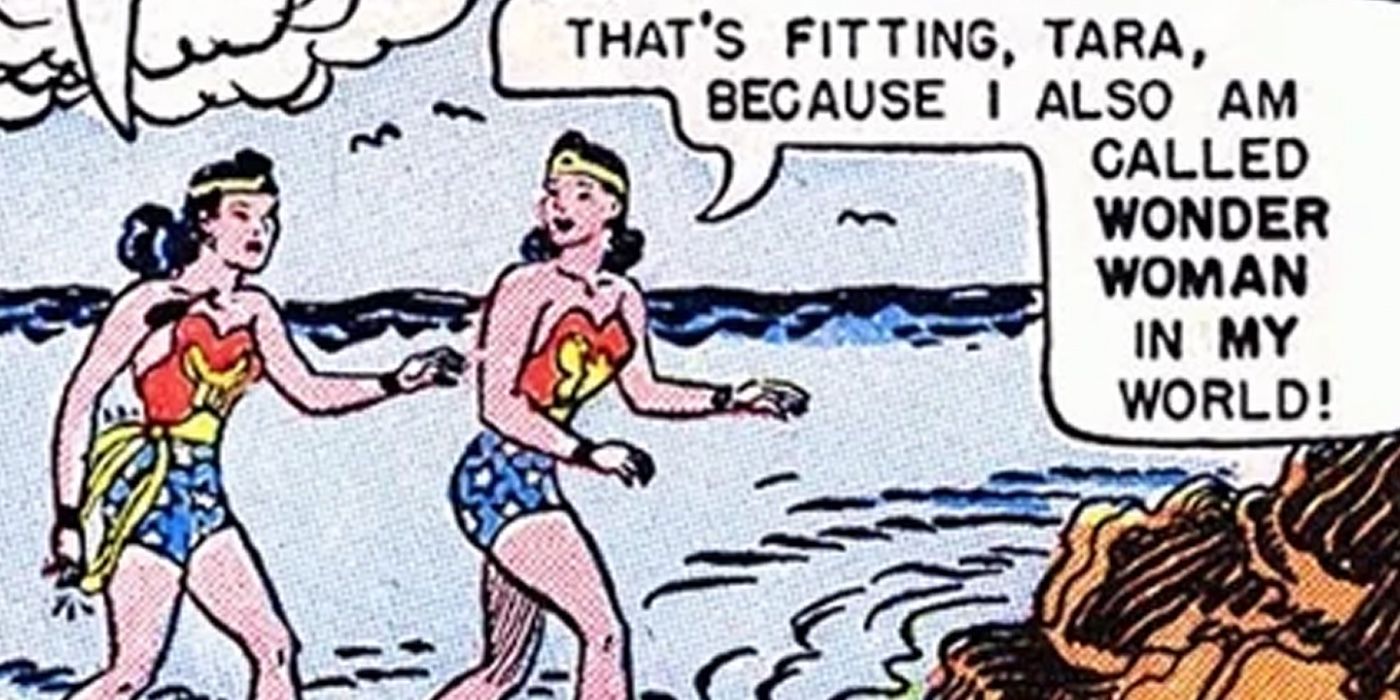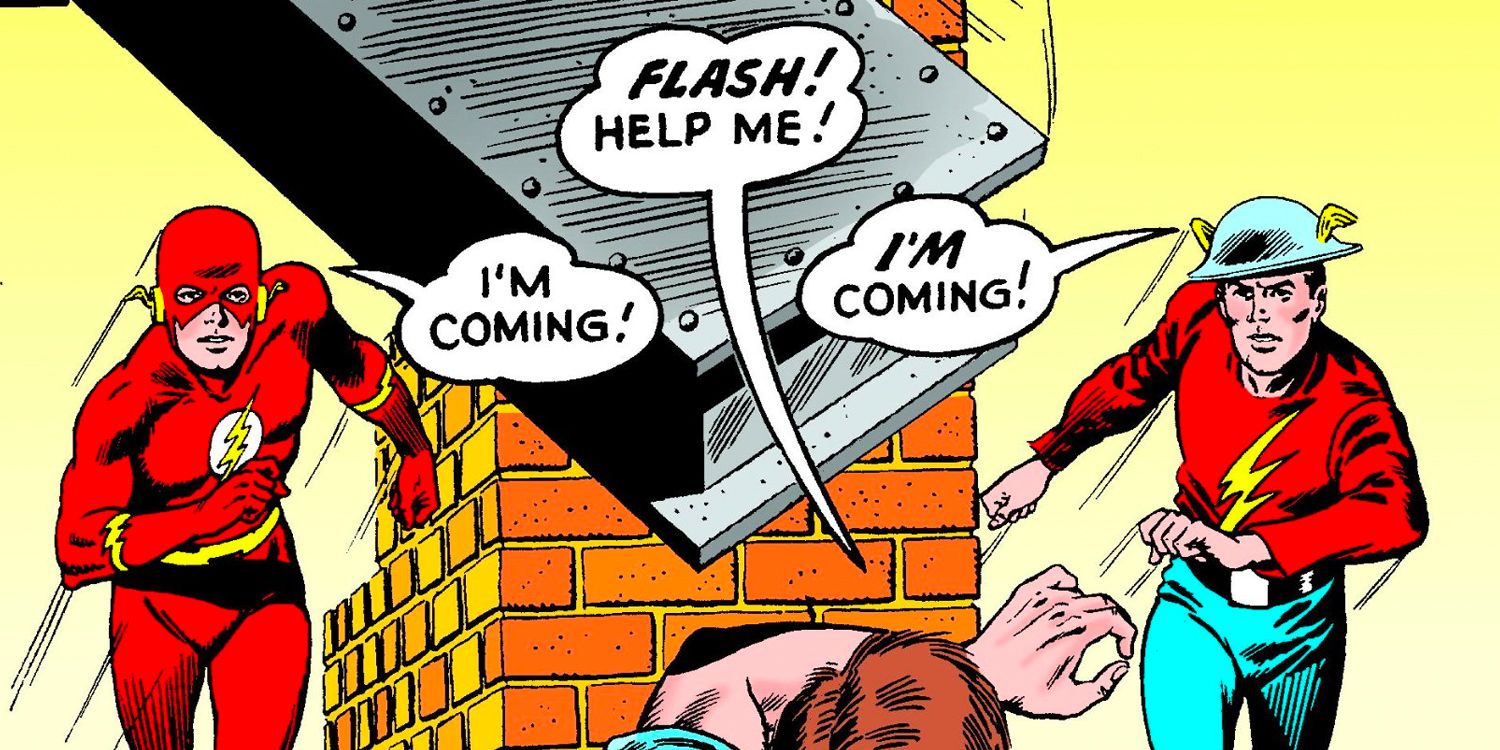The Flash #123 by Gardner Fox, Carmine Infantino and Joe Giella is often credited as being the first comic book to mention the idea of the Multiverse. The existence of parallel universes, though, predates this issue by almost a decade. In the 1953 book Wonder Woman #59 by Robert Kanigher and Harry G. Peter, the Amazonian travels to a "mirror" world and meets a different version of herself. This is a significant issue in the history of DC's Multiverse.
The concept of the Multiverse can be traced back to the Golden Age of comics and the story "The First Meeting of the Justice Society of America" in All-Star Comics #3, by Gardner Fox and Everett E. Hibbard. In this issue, the Justice Society of America was introduced and gave readers the first superhero team with characters that simultaneously appeared in other comic books. This issue, whether it knew it or not, created the first shared "universe" where all these heroes lived in the same world. Prior to All-Star Comics #3, characters from the different comic books seemingly existed in different, separate worlds.
All-Star Comics #3 never used the word "Multiverse" or "parallel universe" or anything similar, and the notion of an infinite number of universes wasn't further developed until thirteen years later. In the story, "Wonder Woman's Invisible Twin" in Wonder Woman #59, Diana is transported to a parallel, "mirror" universe where “everyone on it is a double of everyone on Earth.” In this story, Wonder Woman's lasso is struck by lightning. As she falls from a bridge, the scenery around the Amazonian changes and she soon finds herself tumbling towards the water with an identical twin by her side. Everything about the woman next to her is the same, from their hairdos to the costumes they're wearing.
The double tells Diana that her name is Princess Tara Terruna, which coincidentally translates to "Wonder Woman," and while fighting her arch-nemesis Duke Dazam, she was also thrown from a bridge. There really isn't anything spectacular about this story from the Golden Age as the two Wonder Women team up to defeat Dazam, who has taken over this world, Earth-59. After they take down Dazam, a similar accident occurs, and Wonder Woman is once again "hurled through the veil separating the two worlds” and returns to her Earth, Earth-2. Reflecting on what happened to her, Wonder Woman notes that "what happened to my double in our co-existing world – affected me! Something that can happen to anyone!” With these words, Diana has discovered the Multiverse, but this is a concept that DC wouldn't further develop for another decade with The Flash #123.
Barry Allen's Flash is regarded as the first hero of the Silver Age, which is the world of Earth-1. When Barry Allen visits Earth-2 in The Flash #123, by Gardner Fox, Carmine Infantino, Joe Giella, and Carl Gafford, this had an enormous impact. This meant that DC's heroes occupied more than one Earth, the Golden Age still existed, and it was possible to travel between these various worlds. This issue also makes the readers part of this Multiverse.
When Wonder Woman had her adventure with Tara Terruna, modern readers instantly recognized that her journey was the first trip to another parallel world. Historically, this adventure predates Barry Allen's adventure in The Flash #123 and serves as a precursor to what will become known as the Multiverse.



